Ingestion of Foreign Objects
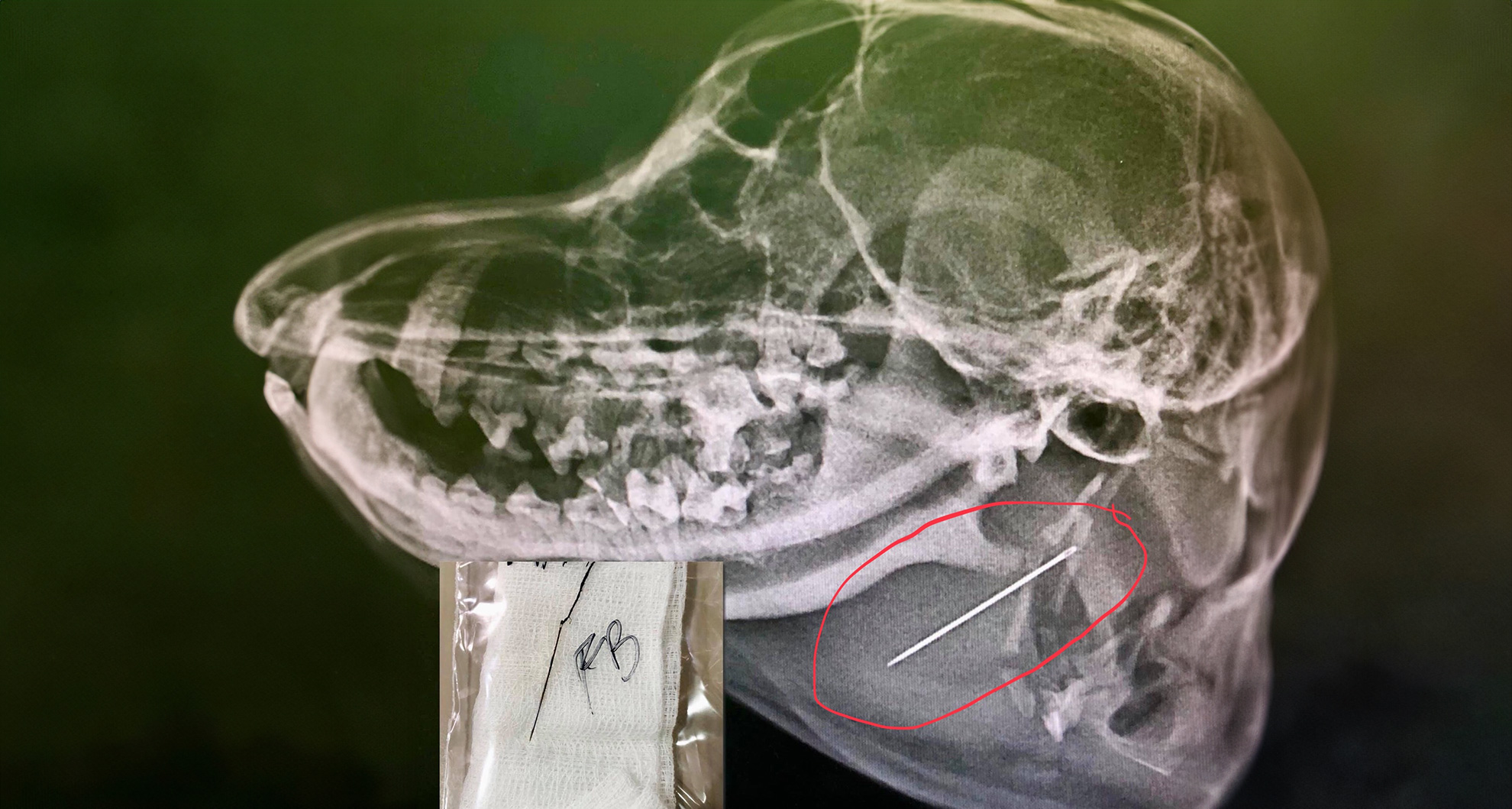


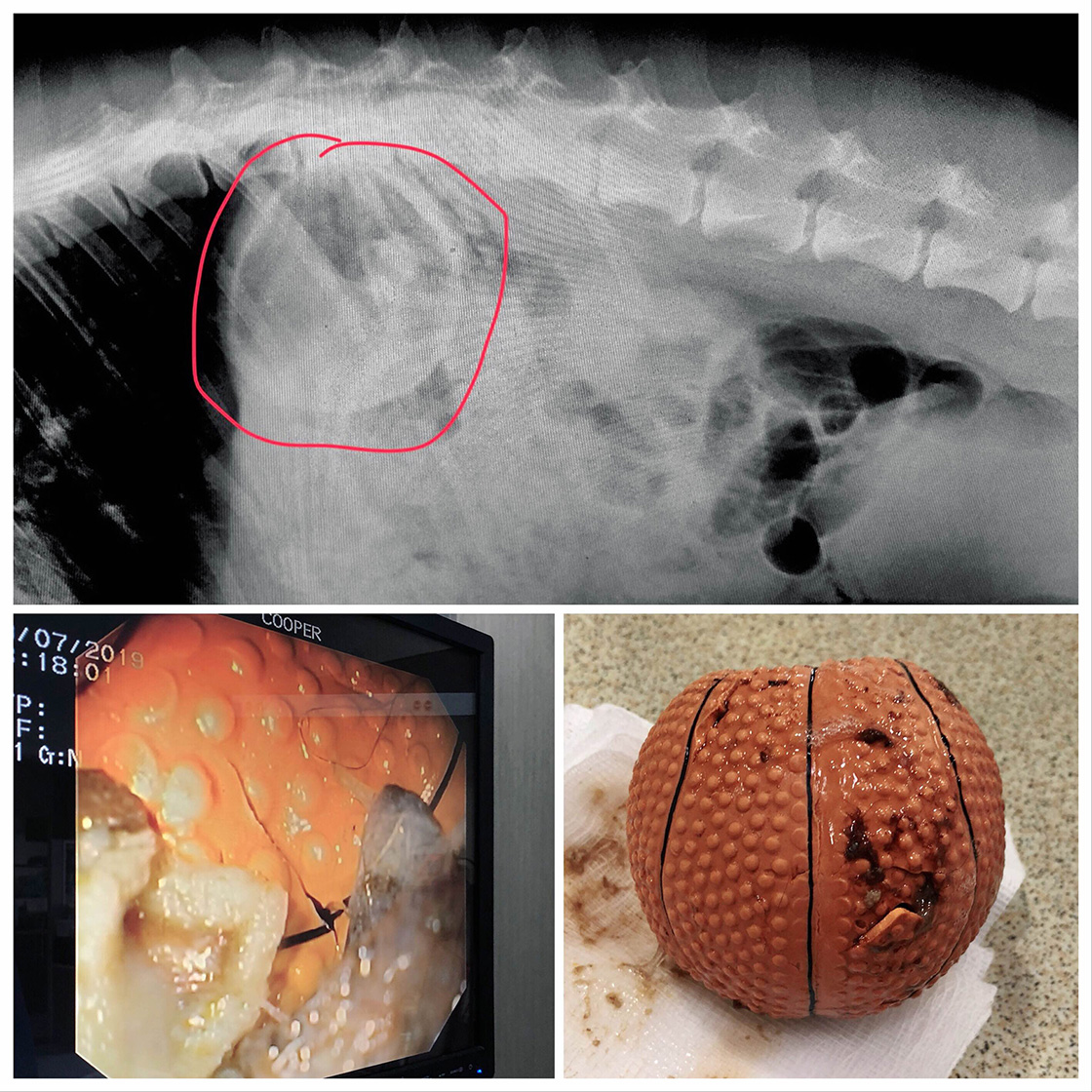
Radiographs (sometimes with contrast dye) and ultrasound help to determine the location of foreign objects as well as the feasibility and necessity of removal. Watch out for excessive salivation, facial pawing, gagging, vomiting, diarrhea, lethargy, abdominal pain, poor appetite.

Some small blunt objects can pass through the GI tract naturally and without causing damage. For sharp or toxic objects (needles, coins, batteries), do not “wait and see”. Take your pet to the vet immediately for surgery or endoscopic removal.
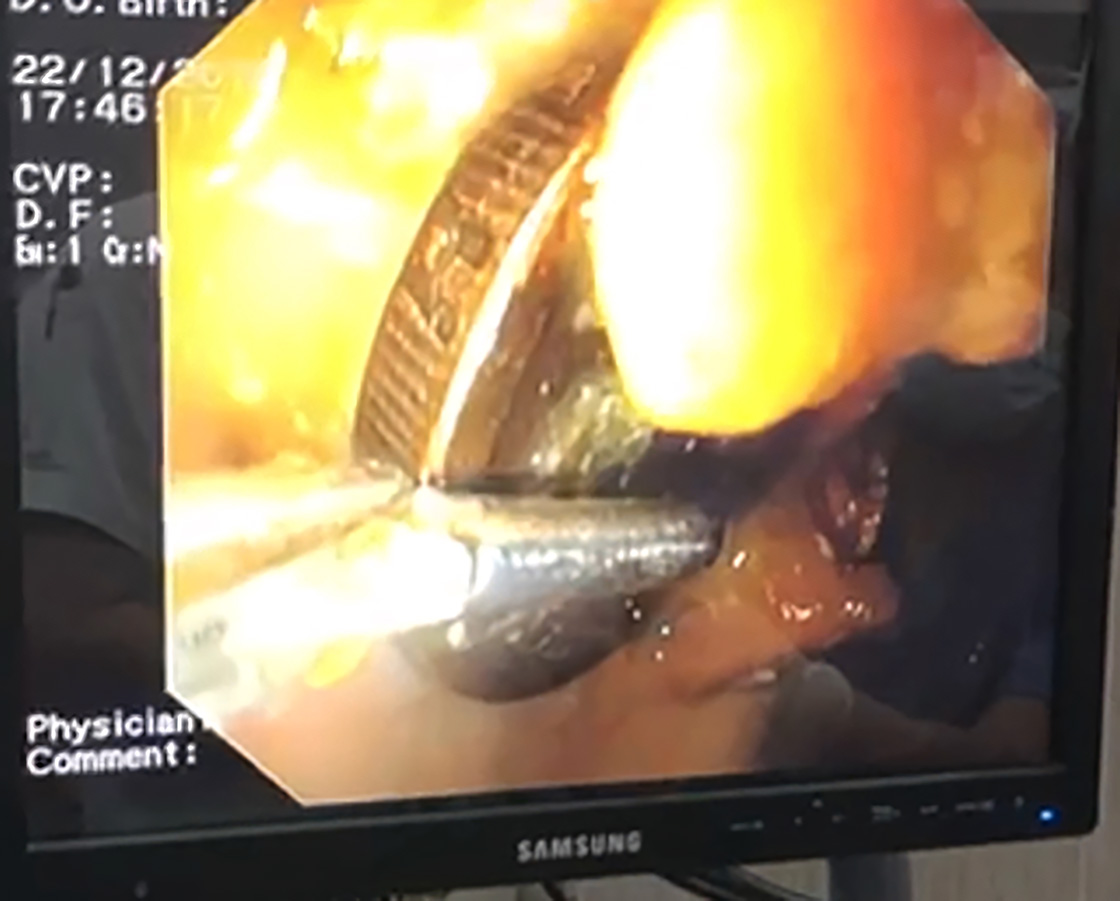
A long thin tube fitted with a camera is passed through the esophagus into the stomach to locate the foreign object and check for any damage in the gastrointestinal system. The object is then grasped by retrieving forceps and carefully removed. Endoscopy is a minimally invasive procedure. Most patients recover very quickly.
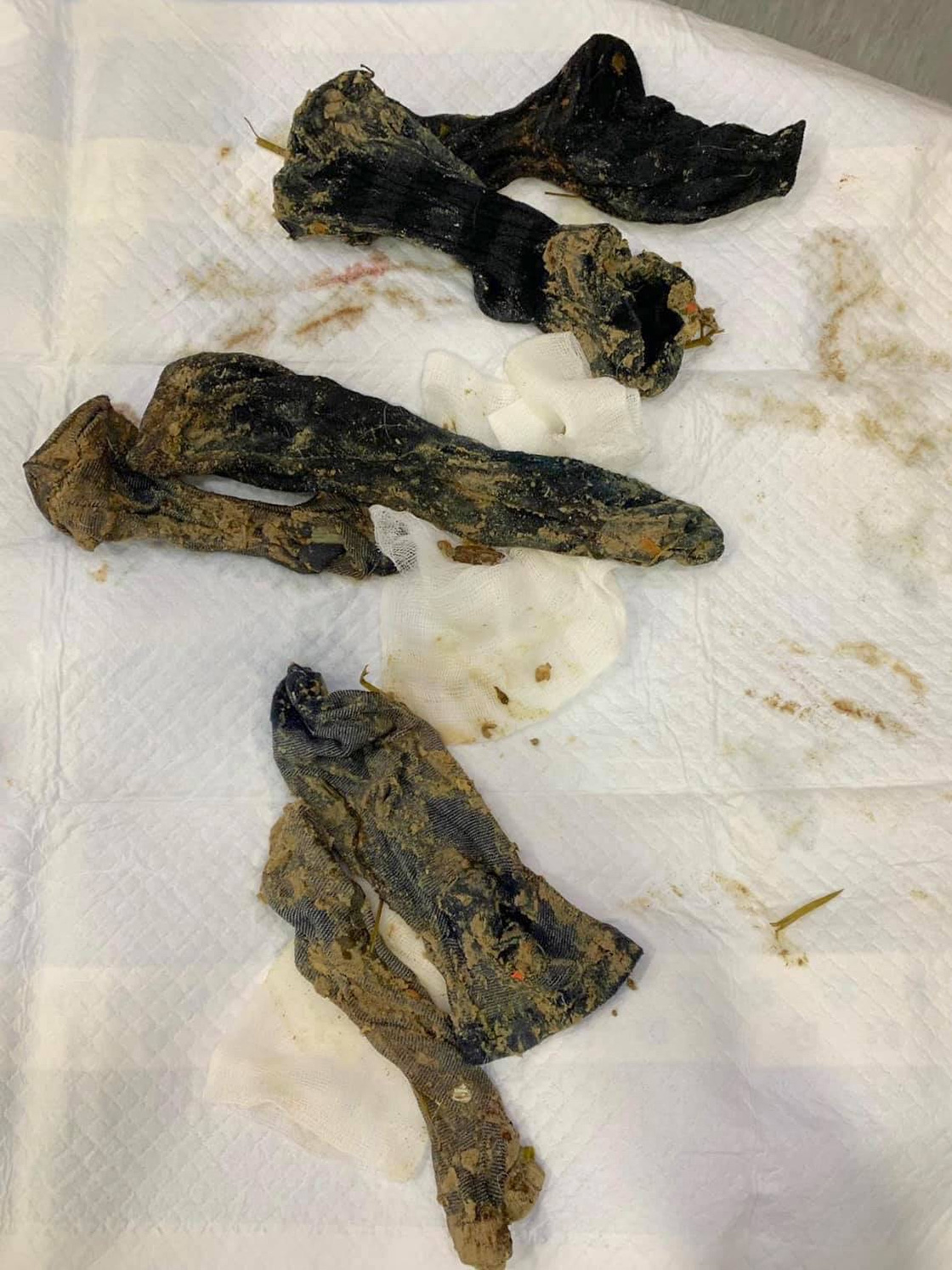
3 pairs of socks successfully retrieved from a big dog.
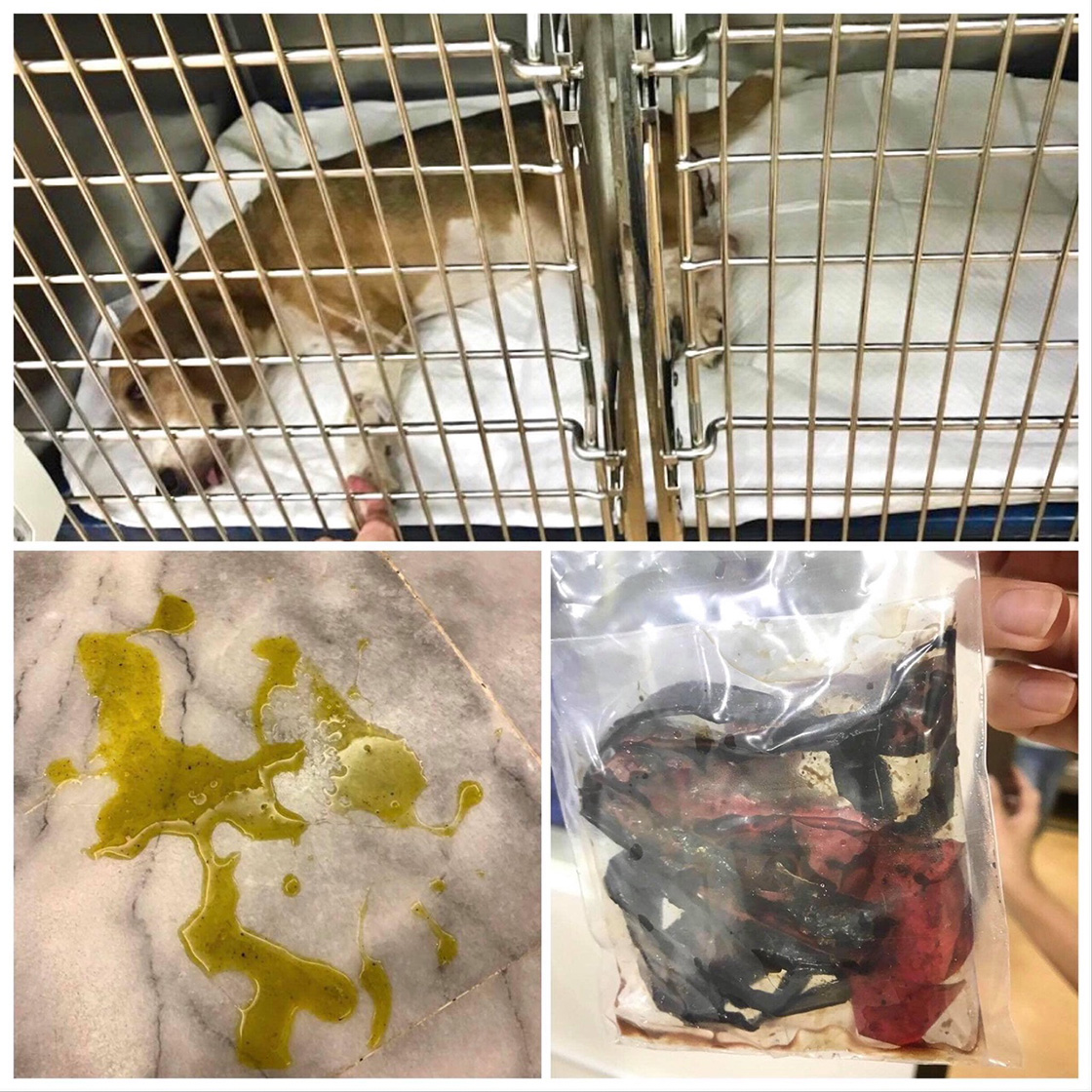
Baxter on the day of surgery with Dr Anthony Goh. Linear foreign body (black tape) was observed from stomach to anus with a severe intussusception (one segment of intestine slips over another) and distension in the jejunum. Intussusception causes abdominal pain, mechanical obstruction, compromised blood flow, proliferation of bacteria. It requires emergency surgery.
The damaged segment is surgically removed and the two healthy ends sutured together in a procedure called intestinal anastomosis. For the other smaller intussusceptions, precise incisions were made to free the trapped intestines and the foreign body carefully removed.

Radiographs (sometimes with contrast dye) and ultrasound help to determine the location of foreign objects as well as the feasibility and necessity of removal. Watch out for excessive salivation, facial pawing, gagging, vomiting, diarrhea, lethargy, abdominal pain, poor appetite.

Some small blunt objects can pass through the GI tract naturally and without causing damage. For sharp or toxic objects (needles, coins, batteries), do not “wait and see”. Take your pet to the vet immediately for surgery or endoscopic removal.

A long thin tube fitted with a camera is passed through the esophagus into the stomach to locate the foreign object and check for any damage in the gastrointestinal system. The object is then grasped by retrieving forceps and carefully removed. Endoscopy is a minimally invasive procedure. Most patients recover very quickly.

3 pairs of socks successfully retrieved from a big dog.

Baxter on the day of surgery with Dr Anthony Goh. Linear foreign body (black tape) was observed from stomach to anus with a severe intussusception (one segment of intestine slips over another) and distension in the jejunum. Intussusception causes abdominal pain, mechanical obstruction, compromised blood flow, proliferation of bacteria. It requires emergency surgery.
The damaged segment is surgically removed and the two healthy ends sutured together in a procedure called intestinal anastomosis. For the other smaller intussusceptions, precise incisions were made to free the trapped intestines and the foreign body carefully removed.

Radiographs (sometimes with contrast dye) and ultrasound help to determine the location of foreign objects as well as the feasibility and necessity of removal. Watch out for excessive salivation, facial pawing, gagging, vomiting, diarrhea, lethargy, abdominal pain, poor appetite.

Some small blunt objects can pass through the GI tract naturally and without causing damage. For sharp or toxic objects (needles, coins, batteries), do not “wait and see”. Take your pet to the vet immediately for surgery or endoscopic removal.

A long thin tube fitted with a camera is passed through the esophagus into the stomach to locate the foreign object and check for any damage in the gastrointestinal system. The object is then grasped by retrieving forceps and carefully removed. Endoscopy is a minimally invasive procedure. Most patients recover very quickly.

3 pairs of socks successfully retrieved from a big dog.

Baxter on the day of surgery with Dr Anthony Goh. Linear foreign body (black tape) was observed from stomach to anus with a severe intussusception (one segment of intestine slips over another) and distension in the jejunum. Intussusception causes abdominal pain, mechanical obstruction, compromised blood flow, proliferation of bacteria. It requires emergency surgery.
The damaged segment is surgically removed and the two healthy ends sutured together in a procedure called intestinal anastomosis. For the other smaller intussusceptions, precise incisions were made to free the trapped intestines and the foreign body carefully removed.